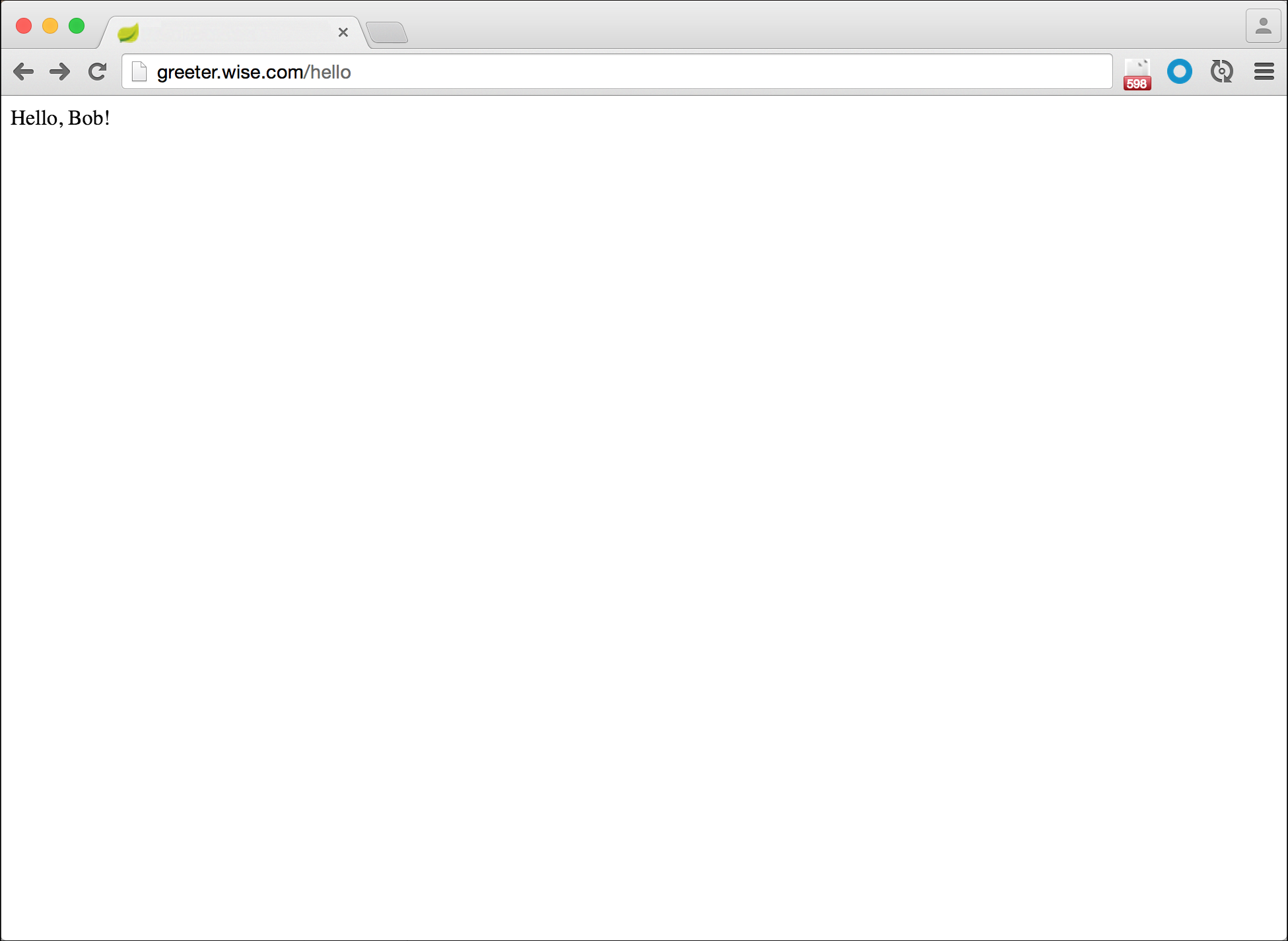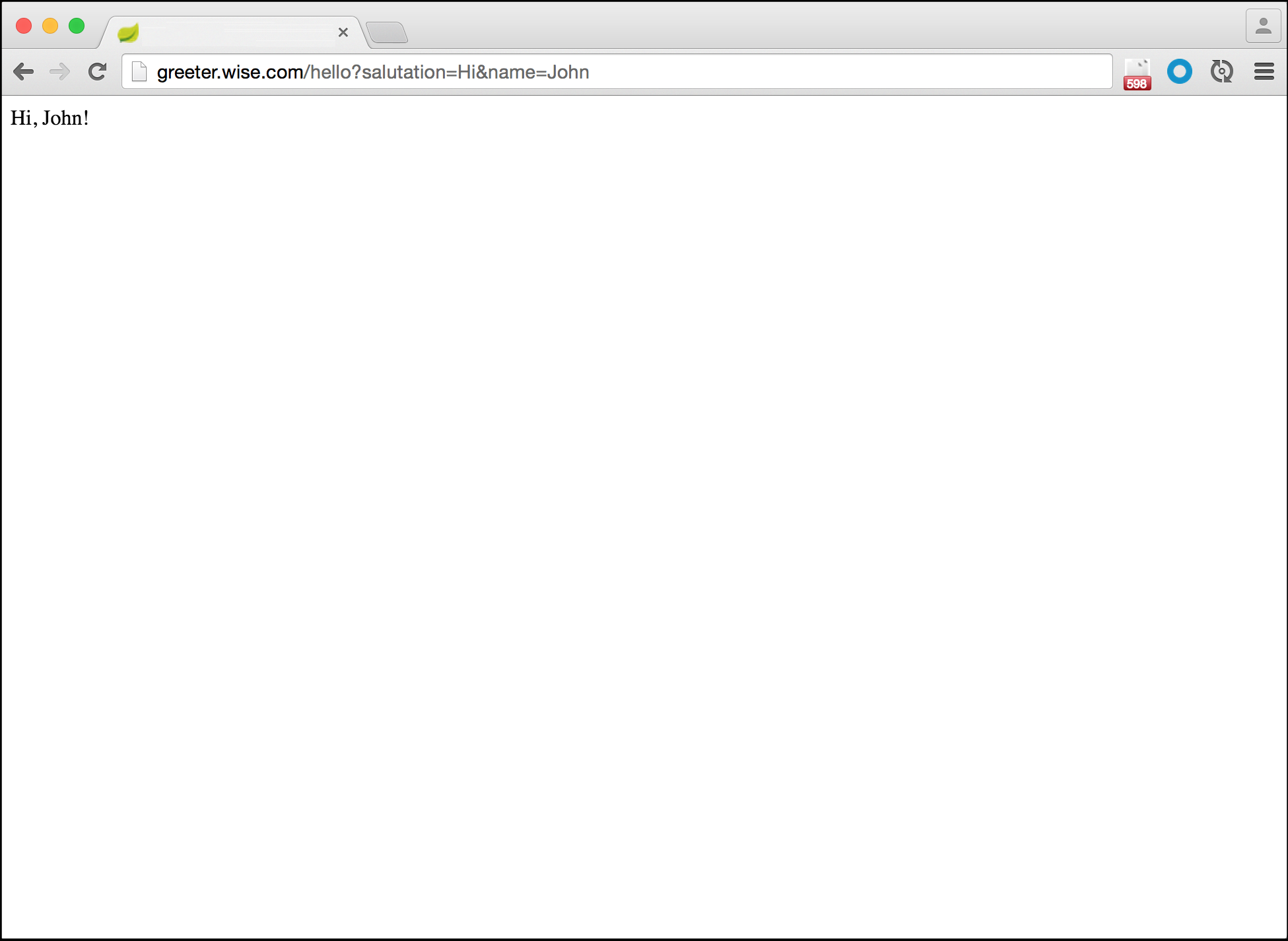Message Generation and Greeter are example applications demonstrating the use of Service Registry for Tanzu. (For information on the Service Registry product in Tanzu Application Service, please see the documentation.)
The main branch is using spring-boot 3.2.0 and spring-cloud 2023.0.0. Check spring-boot-2.7 branch for older versions.
Greeting with Service Registry on TAP has the following deployment architecture:
The eureka-controller manages a StatefulSet of eureka servers and connection Secrets that Greeter and Greeter Messages use to connect to discover each other.
-
Create a
EurekaServerresource with two replicas using the provided YAML definition:kubectl apply -f tap/eurekaserver.yaml
-
Check the status of the
EurekaServer:kubectl describe eurekaservers.service-registry.spring.apps.tanzu.vmware.com eurekaserver-sample -n my-apps
For example:
k describe eurekaservers.service-registry.spring.apps.tanzu.vmware.com eurekaserver-sample Name: eurekaserver-sample Namespace: my-apps Labels: <none> Annotations: <none> API Version: service-registry.spring.apps.tanzu.vmware.com/v1alpha1 Kind: EurekaServer Metadata: Creation Timestamp: 2023-10-20T13:53:51Z Generation: 1 Resource Version: 1727487 UID: 1c411573-281a-4ec1-b81e-65f746404ac8 Spec: Replicas: 2 Status: Binding: Name: eureka-eurekaserver-sample-client-binding-z5tmh Conditions: Last Transition Time: 2023-10-20T13:53:57Z Message: EurekaServer reconciled Observed Generation: 1 Reason: EurekaServerReconciled Status: True Type: Ready Observed Generation: 1 Server Binding: Name: eureka-eurekaserver-sample-server-binding-m946r Events: <none>A successful
EurekaServerresource has aReadycondition set totrueand astatus.binding.namefield pointing to a secret containing connection information. -
Claim credentials using the Tanzu CLI:
tanzu service resource-claim create -n my-apps eurekaserver-sample \ --resource-name eurekaserver-sample \ --resource-kind EurekaServer \ --resource-api-version service-registry.spring.apps.tanzu.vmware.com/v1alpha1 \ --resource-namespace my-appsNoteAlternatively the provided
ResourceClaimyaml definition can be used:kubectl apply -f tap/resource-claim.yaml
-
Create workloads for both
greeterandgreeter-messagesusing the Tanzu CLI:tanzu apps workload create -f tap/greeter-messages.yaml --yes tanzu apps workload create -f tap/greeter.yaml --yes
-
Retrieve the ingress route associated with the Greeter application using the tanzu cli:
tanzu apps workload get greeter
For example:
$ tanzu apps workload get greeter # other output... 🚢 Knative Services NAME READY URL greeter Ready https://greeter.my-apps.tap To see logs: "tanzu apps workload tail greeter --timestamp --since 1h"
Where
https://greeter.my-apps.tapis the accessible ingress route to the greeter application -
Visit
[ROUTE]/hello, where[ROUTE]is the ingress route you just retrieved. The Greeter application will use the Service Registry to look up the Message Generation application and get a greeting message, which (to begin with) should be “Hello, Bob!” -
You can see what the Message Generation application is sending back by viewing its logs, using
tanzu apps workload tail greeter-messages:$ tanzu apps workload tail greeter-messages greeter-messages-579d67c498-bf6zl[workload] 2023-10-20T17:52:17.001Z INFO 1 --- [nio-8080-exec-3] messages.MessagesController : Now saying "Hi" to John
-
To get a different greeting message, you can provide
salutationandnameparameters, as in[ROUTE]/hello?salutation=Hi&name=John. The Greeter application will send those parameters to the Message Generation application and the resulting greeting will be customized to match.
For more information about the Service Registry and its use in a client application, see the Service Registry documentation.
-
Build the two projects from the root (
greeting) directory. If using Maven, run:$ mvn package
If using Gradle, run
./gradlew build(OS X, Linux) orgradlew.bat build(Windows).$ ./gradlew build
-
Run the deployment script (if you used Maven,
scripts/deploy_mvn.shorscripts/deploy_mvn.bat; if you used Gradle,scripts/deploy_gradle.shorscripts/deploy_gradle.bat).$ ./scripts/deploy_gradle.sh
The script will create a Service Registry service instance and then push the applications and bind them to the service.
|
Note
|
By default, the Spring Cloud Services Starters for Service Registry causes all application endpoints to be secured by HTTP Basic authentication. For more information or if you wish to disable this, see the documentation. (HTTP Basic authentication is disabled in these sample applications.) |
-
Visit
[ROUTE]/hello, where[ROUTE]is the route bound to the Greeter application. The Greeter application will use the Service Registry to look up the Message Generation application and get a greeting message, which (to begin with) should be “Hello, Bob!” -
You can see what the Message Generation application is sending back by viewing its logs. Run
cf logs greeter-messages.$ cf logs greeter-messages Connected, tailing logs for app greeter-messages in org myorg / space development as user... 2015-07-16T13:07:35.86-0500 [App/0] OUT 2015-07-16 18:07:35.861 INFO 29 --- [o-61612-exec-10] greeter-messages.MessageGenerationApplication : Now saying "Hello" to Bob 2015-07-16T13:07:35.87-0500 [RTR/0] OUT greeter-messages.wise.com:80 - [16/07/2015:18:07:35 +0000] "GET /greeting?salutation=Hello&name=Bob HTTP/1.1" 200 31 "-" "Apache-HttpClient/4.3.6 (java 1.5)" 10.68.204.250:39929 x_forwarded_for:"10.68.204.43, 10.68.204.250" vcap_request_id:66b782b6-9953-45b3-52ab-da369ad81f44 response_time:0.016146581 app_id:bd594ad5-2653-4949-afc6-e5f1ae568259 -
To get a different greeting message, you can provide
salutationandnameparameters, as in[ROUTE]/hello?salutation=Hi&name=John. The Greeter application will send those parameters to the Message Generation application and the resulting greeting will be customized to match.
For more information about the Service Registry and its use in a client application, see the Service Registry documentation.


